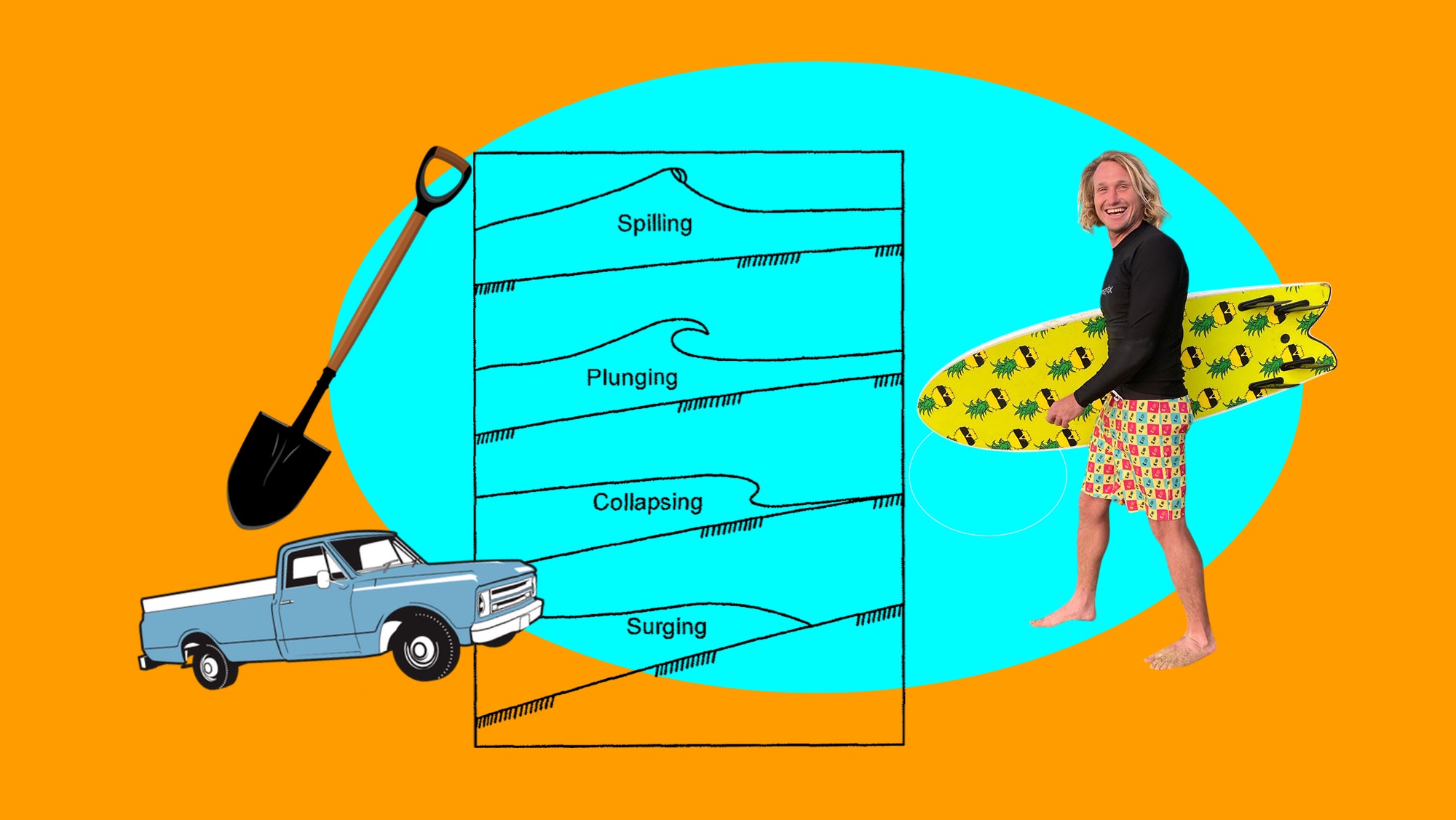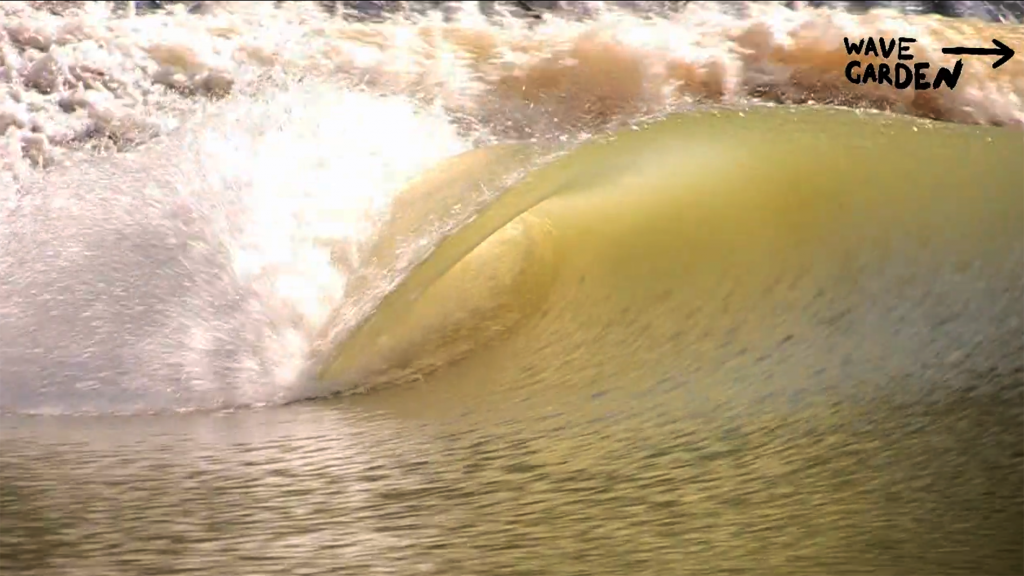How to Build a DIY Wave Pool: The Ultimate Homemade Wave Pool Guide

It’s pretty simple really. All you have to do is displace water to create a wave. We’ve all done it in bath tubs, swimming pools and by tossing stones into a pond. And many of us have thought, “wow, I could do this much bigger. I could even build a device to make waves – surfable waves!”
But only a handful of us go on to toil for hours, months, years in perfecting a system to create waves for surfing. Are you an Aaron Trevis (Surf Lakes), Greg Webber, Thomas Lochtefeld, Josema Odriozola or Clement Ginestet? No. Probably not. But that doesn’t mean we don’t believe in you!
Let’s let’s take a look at some creative ways to make wave pools and other alternative surfing options. This article celebrates the ‘can do’ of wave pools. We even provide list of what you’ll need for your own wave pool hack.
Building a homemade wave pool is an ambitious yet achievable endeavor. With the right materials and planning, enthusiasts can replicate the mechanics of large-scale wave pools at a fraction of the cost. This guide explores the essential steps involved in designing, constructing, and optimizing a DIY wave pool for personal use.

Understanding Wave Pool Technology
Wave pools operate by displacing water through mechanical, pneumatic, or displacement systems. There are many types of wavemakers out there powering surf parks around the globe. Lever-driven wave pools utilize mechanical force, air chamber systems rely on compressed air, and displacement, or plow, waves mimic natural ocean swells. Either way, there is some force pushing water around to create waves. Understanding these mechanisms helps DIY builders choose the best method for their setup.
How to Build a DIY Wave Pool in Your Backyard
Choosing the Right Materials
Selecting the correct materials is crucial to the longevity and efficiency of a DIY wave pool. Durable options such as PVC pipes, high-capacity water pumps, and steel-reinforced paddles ensure wave consistency. Cost-effective alternatives, including recycled liners and repurposed pool structures, offer budget-conscious builders feasible solutions. Eco-friendly materials like bio-friendly filtration systems and sustainable water pumps provide environmentally conscious options.
Designing the Wave Pool Layout
Effective pool design requires careful consideration of depth, wave shape, and water flow mechanics. Deeper pools allow for larger wave formation, while strategically placed barriers help guide waves for optimal surfing conditions. Safety is paramount, with measures such as non-slip surfaces and controlled wave intensity reducing the risk of injury. A well-planned layout accommodates different wave sizes to suit various skill levels.
Installing a Wave Generator
Wave generation is achieved using piston-driven, paddle-based, or compressed air mechanisms. The installation process involves positioning the generator to create consistent wave motion. Adjusting wave frequency and height ensures desired surf conditions. DIY builders must also factor in power consumption and mechanical maintenance when selecting a wave generator system.
Water Circulation & Filtration
Proper water circulation prevents stagnation and maintains water quality. High-efficiency pumps and filtration systems reduce contaminants and sustain wave integrity. Natural filtration methods, such as aquatic plant systems, offer an alternative to chemical treatments. Regular maintenance of filtration components ensures the longevity of the wave pool and prevents bacterial buildup.
Testing & Adjusting Waves
Fine-tuning wave size and frequency is essential to achieving realistic surf conditions. Common DIY wave pool mistakes, such as inconsistent wave output or excessive turbulence, can be corrected by modifying generator settings and optimizing pool depth. Regular testing helps improve wave formation, making adjustments based on performance assessments.
Top DIY Wave Pool Hacks & Real-Life Examples
The Ramp Hack – The Most Dangerous DIY Wave Pool?
The homemade ramp wave by Daniel Risberg and crew is the most dangerous DIY wave on this list. The water is rushing quickly thorugh a narrow channel in a local river when Daniel and friends decided to insert a ramp to create a wave. It worked of course and thankfully no one got hurt. Bonus points for building your own craft to surf your own wave. More bonus points for bodysurfing it and getting a mouthful of whaterver is in the river.
“Me, my brother and a friend riding a standing surf wave we built, on a board we made. Good times! :D”
What you need to make this pool: Custom ramp, rope, immunity to water-borne illnesses.
Ben Gravy’s Legendary DIY Wave Pool
Of course the king of YouTube poolers (well actually it’s a tie with Dylan Graves) Ben Gravy made is own wave pool with friends, a truck and of course a camera.
“I built myself a wave pool machine, what does that even mean? 15 years ago I saw some clips online that inspired me to the core – what if I could surf that?”
After years of building his Nub Nation on YouTube, surfing’s own Pepperment Patty (and we mean that in the most flattering sense) had the resources and time to build his own DIY wave pool.
What you need to make this pool: Sparkling personality, friends, truck, mechanic, plow, YouTube channel.
The Current DIY Wave Pool Champ is From Brazil

Joao Francisco, a surfer from Rio Grande do Sul, Brazil, has successfully developed a functioning homemade wave pool without any formal academic training. With the support of friends, he documented the construction process step by step on social media, where his videos gained widespread attention. The project, which took approximately six months to complete, was built using low-cost materials and a foil plow to generate waves. Encouraged by the results, he is now seeking support to refine the design and develop a larger, more advanced DIY wave pool to contribute to the growing artificial wave industry.
What you need to make this pool: Space, friends, welding chops and shovels. A few hundred thousand Instagram followers doesn’t hurt either.
Other Creative DIY Wave Pool Experiments
The Muddy Marvel
With a million plus views, this Ocean Innovations mud pit shocked the world nearly 10 years ago. The basic principle of blasting out a wave with compressed air is magnified between two inflated canal walls. Add to that a rubber bumper to do lip slides off of, and you can see the potential of this system.
What you need to make this pool: Pit, compressed air, rubber bumpers, brown muddy water,
Built at a half-scale size to attract Indonesian investors, this pool in West Java requires only a big chain, steel plates, stagnant water and muscle. Volunteers (your friends) hoist a weight-loaded pulley and lock it in to place. Releasing the lever pushes a single wave out of the gate. Probably the most sophisticated of the DIY wave pools we researched for this article, the project attracted some Aussie investors. But you too can jump on board.
“$70 000 AU was used to get to this stage,” the company said on YouTube. “Another 26k (is needed) to get to 20 meter long waist-high barrels with gromit surfers in them.”
What you’ll need to make this pool: Gloves for chain pulling, a pit, brown water, some steel plates and $26 000 AU.
Related Coverage
